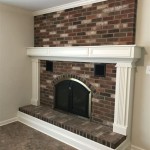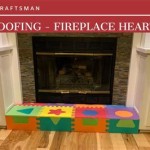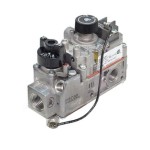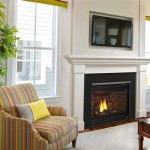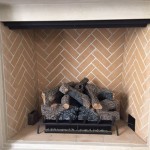Slate Fireplace Hearth Cost: A Comprehensive Guide
A fireplace hearth serves as a crucial safety feature, protecting the surrounding floor and walls from the intense heat generated by a fire. It also provides an aesthetic focal point, enhancing the overall visual appeal of the fireplace and the room it occupies. Slate, a metamorphic rock known for its durability, heat resistance, and unique aesthetic qualities, is a popular choice for fireplace hearths. Understanding the factors that influence slate fireplace hearth cost is essential for homeowners considering this material for their fireplace renovation or installation project.
The cost of a slate fireplace hearth is influenced by several interconnected elements. These elements encompass the type of slate selected, the dimensions of the hearth, the complexity of the installation process, and regional pricing variations. A thorough understanding of these factors will empower homeowners to make informed decisions and accurately budget for their slate fireplace hearth project.
Key Point 1: Slate Type and Quality
The type and inherent quality of the slate significantly impact the material cost. Slate varies in color, texture, and origin, each contributing to its overall price. Some types of slate are rarer or require more complex extraction and processing, leading to higher material costs. Furthermore, the presence of imperfections or variations in the slate can affect its price point.
Common types of slate used for fireplace hearths include:
- Brazilian Slate: Known for its consistent color and relatively smooth texture, Brazilian slate is a popular and generally more affordable option.
- Vermont Slate: Renowned for its durability and unique color variations, Vermont slate often comes at a premium due to its quality and origin.
- Chinese Slate: This slate is often a more budget-friendly option. However, quality can vary, so careful inspection before purchase is crucial.
- Welsh Slate: Highly regarded for its exceptional quality and longevity, Welsh slate is typically one of the more expensive options available.
The quality of the slate is assessed based on factors such as its density, thickness, and resistance to chipping and cracking. High-quality slate will exhibit minimal imperfections and a consistent surface texture. Investing in high-quality slate, although potentially more expensive upfront, can offer long-term value due to its increased durability and reduced maintenance requirements.
Homeowners should carefully examine samples of different slate types before making a selection, paying close attention to the color, texture, and overall appearance. Obtaining multiple quotes from different suppliers is also recommended to ensure competitive pricing.
Key Point 2: Hearth Size and Design Complexity
The size and design complexity of the slate fireplace hearth directly influence the amount of material required and the labor involved in the installation process. Larger hearths naturally require more slate, increasing the material cost. Complex designs, such as those with intricate patterns, curves, or multiple pieces, necessitate more precise cutting and fitting, adding to the labor cost.
The dimensions of the hearth must comply with local building codes and regulations, which typically specify minimum size requirements based on the size of the fireplace opening. It is essential to consult with a qualified professional to determine the appropriate hearth dimensions for a specific fireplace.
The shape of the hearth also contributes to the overall cost. A simple rectangular hearth is generally less expensive to fabricate and install than a hearth with curves or angles. Custom designs, while aesthetically appealing, will inevitably increase the cost due to the added complexity of the fabrication process.
Furthermore, the thickness of the slate can affect the cost. Thicker slate tiles are generally more durable and heat-resistant but also more expensive. The appropriate thickness will depend on the specific application and the intensity of the heat generated by the fireplace.
Planning the hearth design carefully is crucial for controlling costs. Opting for a simpler design and standard dimensions can help minimize both material and labor expenses.
Key Point 3: Installation Costs and Regional Variations
Installation costs represent a significant portion of the overall slate fireplace hearth cost. These costs are influenced by factors such as the complexity of the installation, the accessibility of the site, and the prevailing labor rates in the region. The installation process typically involves preparing the subfloor, cutting and fitting the slate tiles, and applying grout or sealant.
The complexity of the installation depends on the existing condition of the subfloor and the design of the hearth. If the subfloor is uneven or damaged, it may require leveling or repair before the slate tiles can be installed. Custom designs with intricate patterns or curves will also increase the installation time and labor costs.
Accessibility to the site can also affect installation costs. If the fireplace is located in a difficult-to-reach area, such as an upper floor or a tight corner, the installer may charge a premium to account for the added effort and time required to transport materials and equipment.
Regional variations in labor rates are another important factor to consider. Labor costs tend to be higher in urban areas and regions with a high cost of living. Obtaining multiple quotes from qualified installers in the local area is essential for comparing prices and ensuring competitive bidding.
In addition to labor costs, homeowners should also factor in the cost of any necessary permits or inspections. Building permits are often required for fireplace renovations or installations, and the cost of these permits can vary depending on the local jurisdiction. Inspections are typically conducted to ensure that the installation complies with building codes and safety regulations.
The existing fireplace setup might demand extra work. Removal of an old hearth, for example, can add significantly to the overall cost. Disposal fees associated with removing the old material need to be considered as well. Structural support might need reinforcement if the new slate hearth is significantly heavier than the previous one; this adds extra cost in labor and materials.
The method of adhesion also contributes to the overall expense. Some installations require specialized mortars or adhesives, especially when working with unusual substrate materials or underfloor heating systems. Preparing the subfloor to achieve optimal adhesion is crucial for the hearth's longevity, potentially adding to the upfront cost.
Grout selection also plays a role in total cost. Epoxy grouts, while more expensive than cementitious grouts, offer superior stain resistance and durability, making them a worthwhile investment in the long run. Considering the aesthetic and functional benefits of different grout options is essential when estimating the overall cost of the project.
Finally, waterproofing is a crucial consideration, especially for hearths exposed to moisture. Applying a sealant or waterproof membrane can protect the slate from water damage and extend its lifespan, although this will add to the initial cost.

How Much Does A Custom Hearth Cost In 2024 Checkatrade

Black Slate Hearth Silverland Stone

Slate Hearth 1200 X 900 Wood Burners Fireplace

Slate Hearth 1200 X 900 Wood Burners Fireplace

Brazilian Black Riven Slate Hearth Mrs Stone

Teardrop Slate Hearth Cost

How Much Does A Custom Hearth Cost In 2024 Checkatrade

Hearths Slate

Brazilian Black Riven Slate Hearth Mrs Stone

Acantha Tile Hearth Set In Slate Venetian Plaster Effect With Aviemore Stove Angled Pipe Fireplace World
Related Posts

